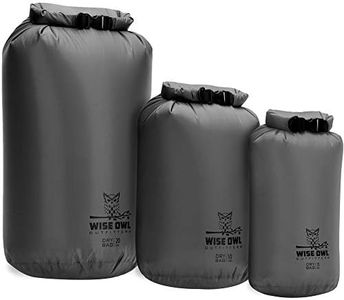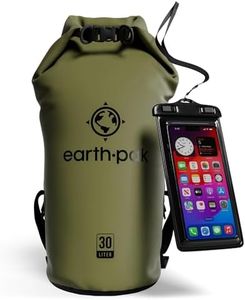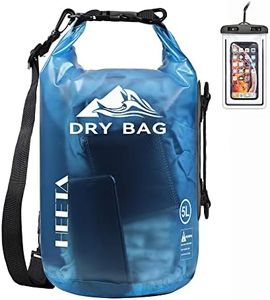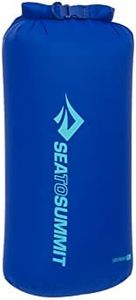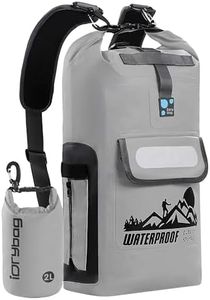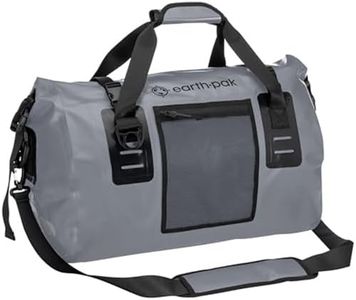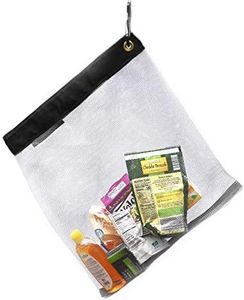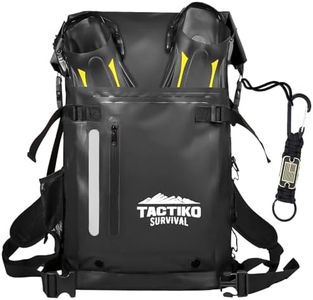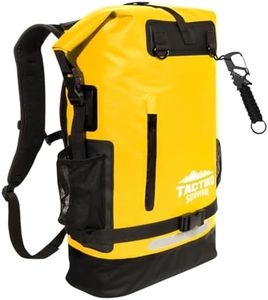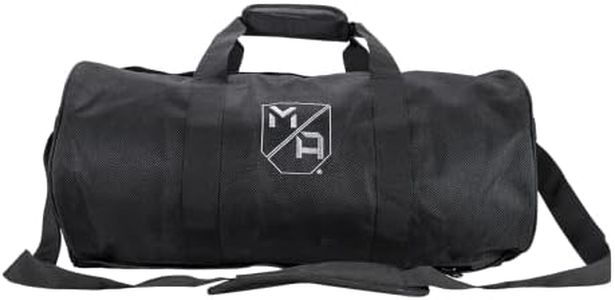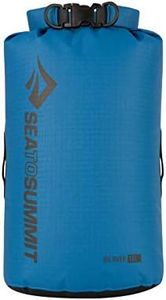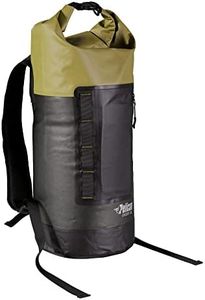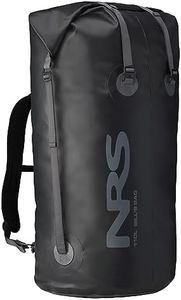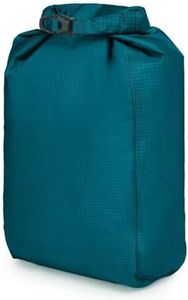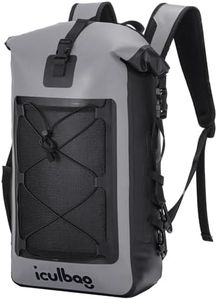10 Best Kayak Dry Bags 2025 in the United States
Our technology thoroughly searches through the online shopping world, reviewing hundreds of sites. We then process and analyze this information, updating in real-time to bring you the latest top-rated products. This way, you always get the best and most current options available.

Our Top Picks
Winner
Earth Pak Waterproof Dry Bag - Roll Top Waterproof Backpack Sack Keeps Gear Dry for Kayak with Waterproof Phone Case
Most important from
31075 reviews
The Earth Pak Waterproof Dry Bag is designed to keep your gear dry during kayaking adventures. Made from durable polyvinyl chloride (PVC), this bag is built to withstand rough water activities. Its roll-top closure is effective in keeping water out, ensuring your belongings stay dry. The bag is available in various capacities (5L to 55L), making it versatile for different packing needs.
For smaller sizes (10L & 20L), it includes a single shoulder strap, while larger sizes (30L, 40L, and 55L) are designed as backpacks with additional sternum straps and a waist-belt for added support and comfort, especially useful when carrying heavier loads. The included IPX8 certified waterproof phone case is a nice touch, providing extra protection for your phone and allowing easy access to take pictures without removing it from the case.
The lightweight and compact design of the bag makes it convenient for travel, as it can be easily folded and packed into luggage. However, the PVC material, while durable, may not be the most environmentally friendly option. Additionally, some users might find the larger sizes bulky when fully packed. The Earth Pak Waterproof Dry Bag is a solid choice for kayakers looking for a dependable and versatile dry bag to keep their gear protected from water.
Most important from
31075 reviews
HEETA Dry Bag Waterproof for Women Men, Roll Top Lightweight Dry Storage Bag Backpack with Phone Case for Travel, Swimming, Boating, Kayaking, Camping and Beach (Transparent Blue, 5L)
Most important from
32460 reviews
The HEETA Dry Bag Waterproof in Transparent Blue is a versatile choice for kayaking, boating, and other water-related activities. Made from durable 0.6mm thick wear-resistant PVC material for the bottom and 0.3mm for the sides, it is designed to withstand various outdoor conditions. The bag's waterproof feature ensures that your items remain dry when engaged in water sports, although it is not suitable for underwater use. With a lightweight design, it won’t add much burden to your shoulders or arms, making it convenient to carry with its adjustable straps and handle. The transparent material is a practical touch, allowing you to easily locate your items and even read messages on your phone through the bag.
The roll-top closure type provides a secure seal and lets you adjust the bag's capacity by rolling the top edge multiple times. The HEETA Dry Bag comes in five different sizes (5L to 40L), catering to various needs and occasions. Additionally, it includes a free waterproof phone case, enhancing its value for water sports enthusiasts. On the downside, while the bag is highly praised for its waterproof capability, it is not designed for submersion, which may limit its use for certain activities. The transparent PVC material, though practical, might not be as aesthetically pleasing for some users.
This dry bag is well-suited for those who need a dependable, easy-to-carry solution to keep their belongings dry during outdoor adventures.
Most important from
32460 reviews
Sea to Summit Lightweight Dry Bag, Multi-Purpose Dry Storage, 13 Liter, Surf Blue
Most important from
18 reviews
The Sea to Summit Lightweight Dry Bag is designed for various outdoor activities such as backpacking, hiking, camping, sea kayaking, ski touring, cycling, and travel. Made from 100% nylon with a PU coating and DWR finish, it promises durability and water resistance. With a 13-liter capacity, it's a versatile size for storing essential gear without being overly bulky. The roll-top closure, made from secure Hypalon material, ensures that the contents remain dry, while the white interior coating helps you see inside the bag more easily.
The double-stitched, tape-sealed seams add to the waterproofing, and the D-ring and base lash loop offer convenient attachment options. Its streamlined, low-profile shape and oval base prevent it from rolling around, making it easy to pack and carry. The field repair buckle is an innovative feature, allowing for quick fixes if necessary. However, the bag's lightweight nature might make it less suitable for heavy-duty uses or extreme conditions.
Weighing just 0.18 pounds, it's very lightweight, which is great for reducing carry weight but could also mean that it might not stand up to very rough handling. This dry bag is ideal for those who need a reliable, lightweight storage solution for a range of activities, but it may not be the best choice for the most rugged adventures.
Most important from
18 reviews
Buying Guide for the Best Kayak Dry Bags
Choosing the right kayak dry bag is essential to keep your belongings safe and dry while you're out on the water. A dry bag is a waterproof bag that protects your gear from getting wet, which is crucial for activities like kayaking where water exposure is inevitable. When selecting a dry bag, consider the following key specifications to ensure you get the best fit for your needs.FAQ
Most Popular Categories Right Now
